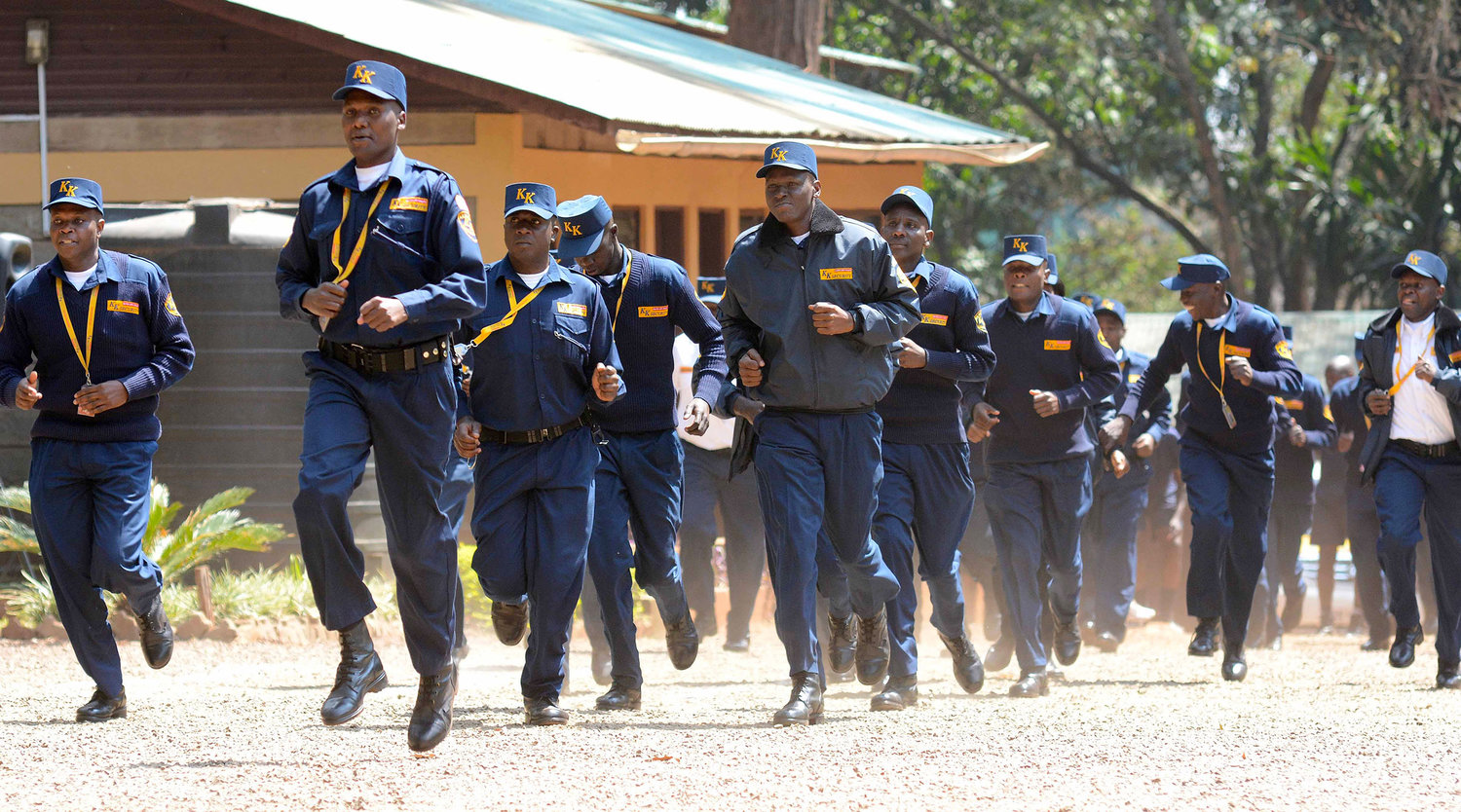Unleashing the Power of Corporate Security: A Comprehensive Guide
From Cybersecurity to Physical Measures: Reinforcing Business Safety in a Changing Globe
In today's quickly progressing digital landscape, the value of corporate safety can not be overstated. As cyber hazards end up being increasingly advanced and common, companies need to surpass standard cybersecurity measures to guard their possessions and procedures - corporate security. This is where the integration of physical security steps comes to be important. By combining the toughness of both cybersecurity and physical security, business can create a thorough defense method that addresses the diverse series of threats they deal with. In this conversation, we will certainly explore the altering danger landscape, the requirement to incorporate cybersecurity and physical security, the implementation of multi-factor authentication procedures, the importance of worker understanding and training, and the adjustment of security steps for remote workforces. By taking a look at these crucial locations, we will acquire important insights into just how companies can reinforce their company safety and security in an ever-changing globe.
Understanding the Changing Hazard Landscape
The advancing nature of the contemporary globe requires a detailed understanding of the changing danger landscape for efficient company safety. In today's interconnected and electronic age, threats to business safety and security have ended up being more intricate and advanced. As innovation advances and companies come to be progressively dependent on digital framework, the possibility for cyberattacks, data violations, and other protection breaches has actually significantly increased. It is critical for organizations to remain notified and adjust their safety and security gauges to deal with these developing hazards.
One secret facet of recognizing the altering risk landscape is acknowledging the various sorts of hazards that companies face. Cybercriminals are constantly creating brand-new strategies to exploit susceptabilities in computer system systems and networks. These hazards can vary from malware and ransomware strikes to phishing scams and social engineering strategies. Furthermore, physical dangers such as theft, vandalism, and business espionage stay prevalent issues for companies.
Tracking and examining the threat landscape is important in order to identify possible dangers and vulnerabilities. This involves remaining upgraded on the most recent cybersecurity patterns, examining hazard intelligence reports, and performing routine danger evaluations. By understanding the changing hazard landscape, companies can proactively execute suitable safety and security steps to minimize dangers and safeguard their assets, online reputation, and stakeholders.
Integrating Cybersecurity and Physical Safety
Incorporating cybersecurity and physical security is critical for detailed corporate defense in today's digital and interconnected landscape. As companies progressively rely upon technology and interconnected systems, the borders between physical and cyber dangers are becoming obscured. To properly protect versus these dangers, a holistic technique that combines both cybersecurity and physical safety and security measures is crucial.
Cybersecurity concentrates on securing electronic properties, such as networks, systems, and information, from unapproved accessibility, disruption, and burglary. Physical security, on the other hand, incorporates measures to protect physical assets, people, and facilities from dangers and vulnerabilities. By integrating these two domain names, organizations can deal with susceptabilities and hazards from both physical and electronic angles, thereby enhancing their general protection position.
The combination of these 2 self-controls permits an extra comprehensive understanding of safety and security risks and allows a unified response to incidents. As an example, physical access controls can be enhanced by integrating them with cybersecurity methods, such as two-factor verification or biometric recognition. Cybersecurity measures can be complemented by physical security actions, such as security video cameras, alarms, and protected access factors.

Applying Multi-Factor Authentication Actions
As organizations progressively prioritize detailed security procedures, one effective strategy is the implementation of multi-factor verification actions. Multi-factor authentication (MFA) is a safety method that needs customers to provide several forms of identification to access a system or application. This strategy includes an extra layer of security by combining something the individual understands, such as a password, with something they have, like a finger print or a protection token.
By implementing MFA, organizations can substantially boost their safety and security pose - corporate security. Typical password-based verification has its constraints, as passwords can be easily jeopardized or neglected. MFA minimizes these threats by adding an extra authentication aspect, making it a lot more hard for unapproved individuals to get to sensitive details
There are several sorts of multi-factor authentication approaches readily available, including biometric visit our website authentication, SMS-based verification codes, and hardware symbols. Organizations require to analyze their details needs and select one of the most ideal MFA solution for their demands.
Nevertheless, the application of MFA must be meticulously intended and carried out. It is vital to strike an equilibrium in between safety and functionality to stop user irritation and resistance. Organizations must likewise consider possible compatibility concerns and give adequate training and assistance to make sure a smooth shift.
Enhancing Employee Recognition and Training
To enhance have a peek at this website business protection, organizations need to prioritize improving staff member recognition and training. Many security violations take place due to human mistake or absence of awareness.
Efficient staff member awareness and training programs ought to cover a vast array of topics, including data security, phishing assaults, social design, password hygiene, and physical safety and security procedures. These programs must be customized to the particular requirements and obligations of various worker duties within the organization. Routine training workshops, simulations, and sessions can help workers develop the required skills and knowledge to recognize and respond to protection hazards effectively.
Furthermore, organizations need to encourage a culture of security recognition and supply ongoing updates and suggestions to maintain employees educated regarding the current threats and reduction strategies. This can be done through interior communication channels, such as newsletters, intranet websites, and email projects. By cultivating a security-conscious workforce, companies can dramatically lower the likelihood of safety and security incidents and shield their beneficial possessions from unapproved accessibility or concession.

Adapting Protection Measures for Remote Workforce
Adjusting corporate safety measures to accommodate a remote labor force is vital in making certain the defense of delicate details and properties (corporate security). With the raising trend of remote work, companies need to execute ideal safety steps to alleviate the dangers related to this brand-new means of functioning
One check out here vital facet of adapting security measures for remote work is developing secure communication channels. Encrypted messaging systems and virtual personal networks (VPNs) can assist shield sensitive info and protect against unauthorized accessibility. Additionally, organizations must apply using solid passwords and multi-factor verification to enhance the protection of remote access.
An additional essential consideration is the execution of protected remote access remedies. This entails providing employees with protected accessibility to business sources and data with virtual desktop framework (VDI), remote desktop methods (RDP), or cloud-based options. These modern technologies guarantee that sensitive info stays protected while making it possible for workers to execute their duties efficiently.

Finally, comprehensive safety awareness training is critical for remote staff members. Training sessions must cover finest methods for safely accessing and dealing with sensitive information, recognizing and reporting phishing efforts, and keeping the general cybersecurity hygiene.
Verdict
In verdict, as the danger landscape remains to develop, it is critical for organizations to reinforce their protection measures both in the cyber and physical domain names. Integrating cybersecurity and physical protection, applying multi-factor verification actions, and boosting employee awareness and training are vital actions towards accomplishing robust corporate safety and security. Additionally, adapting security measures to fit remote labor forces is essential in today's changing globe. By carrying out these actions, companies can mitigate dangers and secure their important assets from potential hazards.
In this discussion, we will certainly discover the changing hazard landscape, the requirement to incorporate cybersecurity and physical safety, the application of multi-factor authentication procedures, the significance of staff member understanding and training, and the adjustment of safety measures for remote labor forces. Cybersecurity measures can be matched by physical security actions, such as surveillance electronic cameras, alarms, and safe and secure access points.
As organizations progressively focus on comprehensive safety actions, one effective technique is the execution of multi-factor authentication procedures.In verdict, as the risk landscape proceeds to evolve, it is vital for companies to strengthen their safety gauges both in the cyber and physical domains. Integrating cybersecurity and physical safety, applying multi-factor authentication procedures, and enhancing worker recognition and training are crucial steps towards accomplishing durable company security.